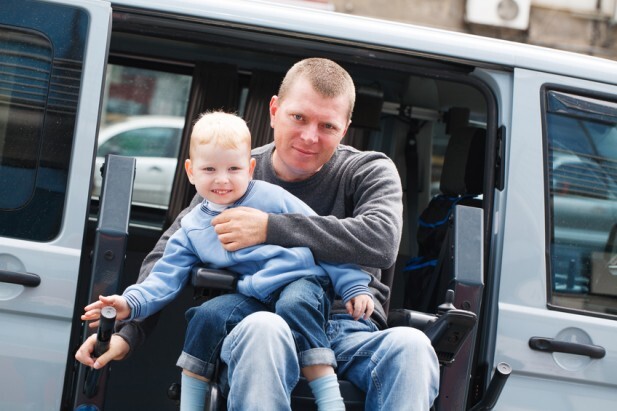Spinal Cord Injury & Vehicle Modification

It is not uncommon that survivors of spinal cord injury declare a return to driving as being one of their primary goals. Depending on the severity of injury, and the amount of regained function, such a goal may be entirely realistic and achievable. Although the injured person may no longer be able to drive a vehicle in a normal manner, adaptive technology and vehicle modifications can permit a return to driving.
A sedan may be appropriate for a person who is able to independently open and close a vehicle door, complete a transfer to and from the sedan, and store and retrieve the wheelchair within the vehicle. Modified vans may otherwise be a more appropriate option.
Modifications to vehicles, such as the lowering of floorboards and the installation of automatic ramps, must be considered. Likewise, adaptive technology will be necessary to overcome impairments of strength and range of motion; steering wheels may be modified for ease of use or hand control technology, such as joysticks, may be installed to allow for one handed steering, braking and acceleration.
A driving assessment can be a vital first step in considering a return to driving; a referral by a medical doctor to a driver rehabilitation center may be made in this regard. A driving assessment would typically address vision perception, functional ability, strength and range of motion, reaction time, cognitive ability (if indicated), ability to transfer, and behind the wheel performance. Factors such as medical stability, reliance on narcotics, and ability to manage pain and spasm will also be considered.
Assuming a favourable driving assessment outcome, driver rehabilitation specialists can help guide decisions about vehicle type and about modification and adaptive technology needs. It is important to consider whether maximum medical recovery has been achieved prior to purchasing a vehicle given that changes in strength and function may impact the appropriateness of the purchased vehicle. In some cases, even with a favourable assessment, a delay in purchase may be warranted.
Modified vehicles are expensive and the costs can vary dramatically from person to person depending on the extent of the impairments. Some survivors of spinal cord injury may have access to private benefits, such as those afforded through a no-fault statutory accident benefits claim. Others may have access to funding through a settled fault-based claim. But for those who have suffered injury without opportunity for compensation, the extraordinary costs may make vehicle purchase seem unobtainable.
Luckily, there are many organizations, charities and grants that may be accessed to assist in covering costs of purchasing modified vehicles. While by no means an exhaustive list, financial support may be obtained through the Ontario March of Dimes, Easter Seals, Presidents Choice Children’s Charities, Kin Canada clubs, Lions Clubs, Rotary Clubs, and Veteran Affairs Canada. Additionally, tax incentives are made available to assist those who purchase modified vehicles as relating to purchase cost, fuel expenses, and maintenance costs. Even the auto industry itself is recognizing the need to assist with the costs of vehicle modifications with several companies, including Chrysler, Honda, Toyota and Volkswagen, now routinely offering rebates for conversion of their vehicles.
In summary, a return to driving for those living with spinal cord injury is now a greater possibility thanks to ongoing advances in vehicle and adaptive technology, the availability of expert assessment and advice, and obtainable benefits and subsidies.
